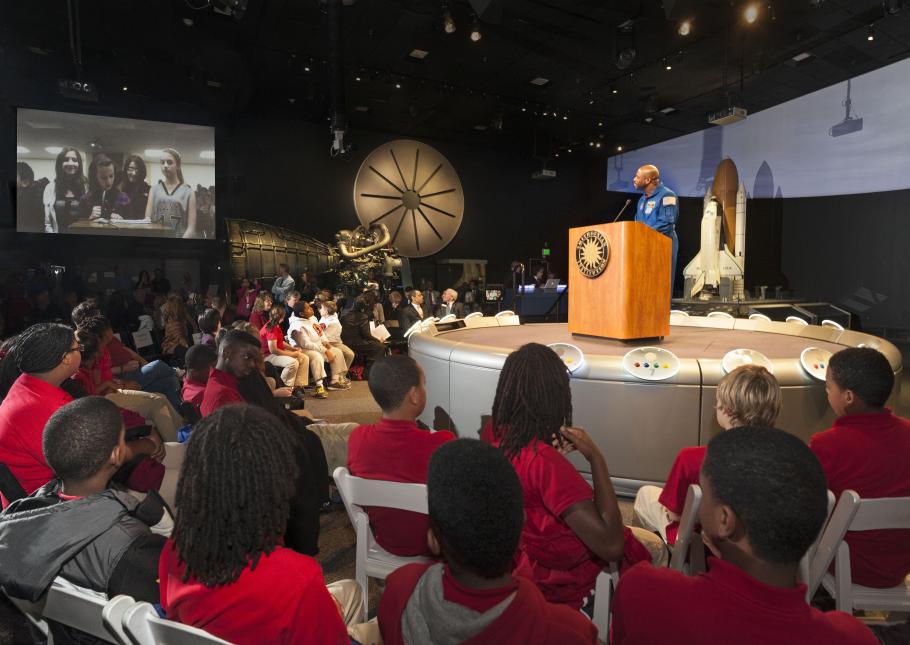How do you bring together two orbiting astronauts and more than 12,000 students scattered around the U.S. and Canada? It’s not rocket science, but it's close. First you have to find some very dedicated partners with a common purpose, like the Smithsonian National Air and Space Museum, the National Aeronautics and Space Administration, the U.S. Department of Education, and the National Center for Earth and Space Science Education. Second you have to ensure an audience; which isn’t very difficult because who wouldn’t jump at the chance to talk to astronauts while in space? Third, and most challenging, you have to put together the technology capable of linking 24 sites scattered around North America and Hawaii with something moving at 28,163 kph (17,500 mph) 354 km (220 miles) above the Earth’s surface. This amazing program occurred in the National Air and Space Museum’s Moving Beyond Earth exhibition, a perfect location because it tells the history of human spaceflight during the shuttle period and beyond. As part of International Education Week, staff conducted a live video downlink between students, Museum visitors, and astronauts onboard the International Space Station (ISS). We used the Internet, video conferencing equipment, and some high-definition cameras to bring three astronauts (two on the ISS and one on Earth) into the classrooms of 24 participating communities and an audience at the Museum. In addition, the downlink was broadcast live on NASA TV and webcast on the NASA and National Air and Space Museum websites.
Students from each of the 24 communities designed a science experiment to be conducted by NASA astronauts in space as part of the National Center for Earth and Space Science Education’s Student Spaceflight Experiments Program. In fact, some of the schools participating in the downlink actually had science experiments onboard the ISS at the time. These students were talking live to one of the actual astronauts who worked with their experiments. Students at each location asked questions of outgoing ISS Commander Sunita Williams and incoming ISS Commander Kevin Ford about life and work aboard the orbiting laboratory. As moderator I was impressed with the thoughtful questions. For example, students from Hilo, HI asked Williams, “What are some of the advancements made in engineering and science due to research conducted aboard the space station, and who profits from these?” and students from Guilford County, NC asked Ford, “What are the challenges and advantages of working with astronauts from other countries?” The reaction from each student group I introduced was incredible enthusiasm! Each time I called on a new school, the students would erupt in cheers that echoed over the distance. Williams and Ford broke out into big grins each time and it seemed that they enjoyed the program as much as the students did. I was amazed by the fact that each school seemed so emotionally and physically invested in the experience. Every time I heard the schools applause I thought about what an incredible opportunity we were providing these kids and it gave me chills.
Following the live Earth-to-station exchange, NASA Associate Administrator for Education and two-time space shuttle astronaut Leland Melvin continued answering questions and encouraged participating students and Museum visitors to study science, technology, engineering and mathematics (STEM). “You are the scientists, engineers and astronauts of tomorrow,” Melvin said. “America’s future of scientific research and space exploration is in your hands, and there’s no better way to prepare yourselves for those grand adventures than to start pursuing a STEM career now.”
View the entire ISS downlink program.


